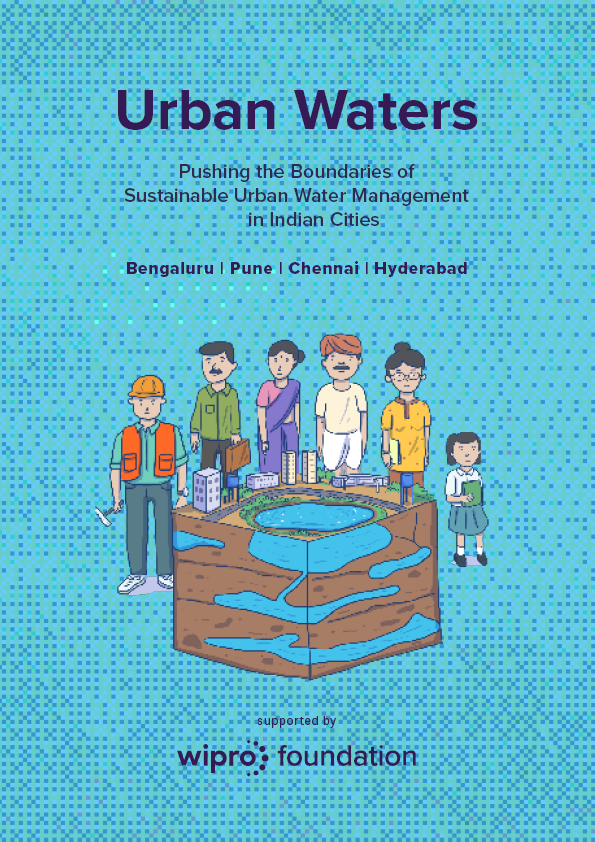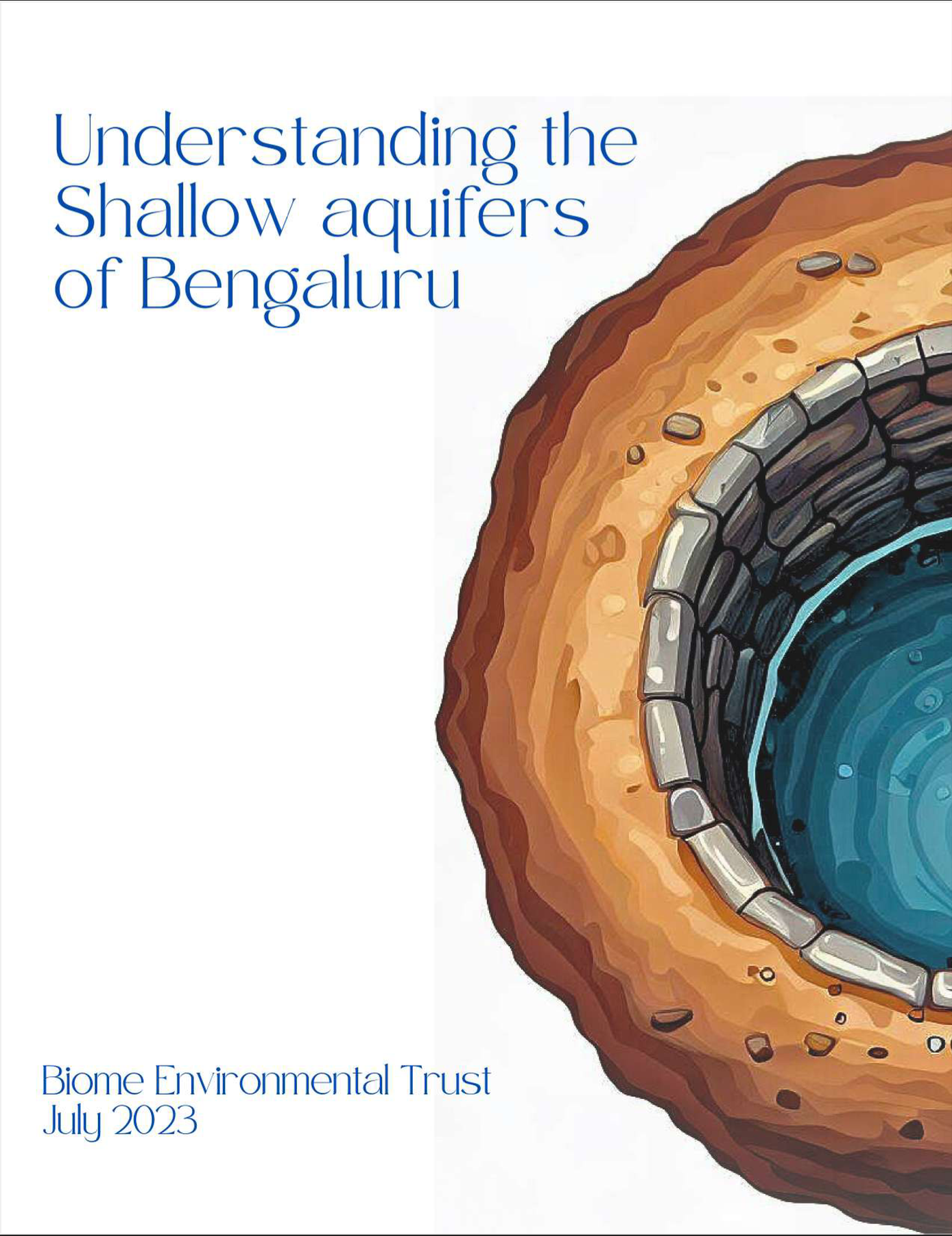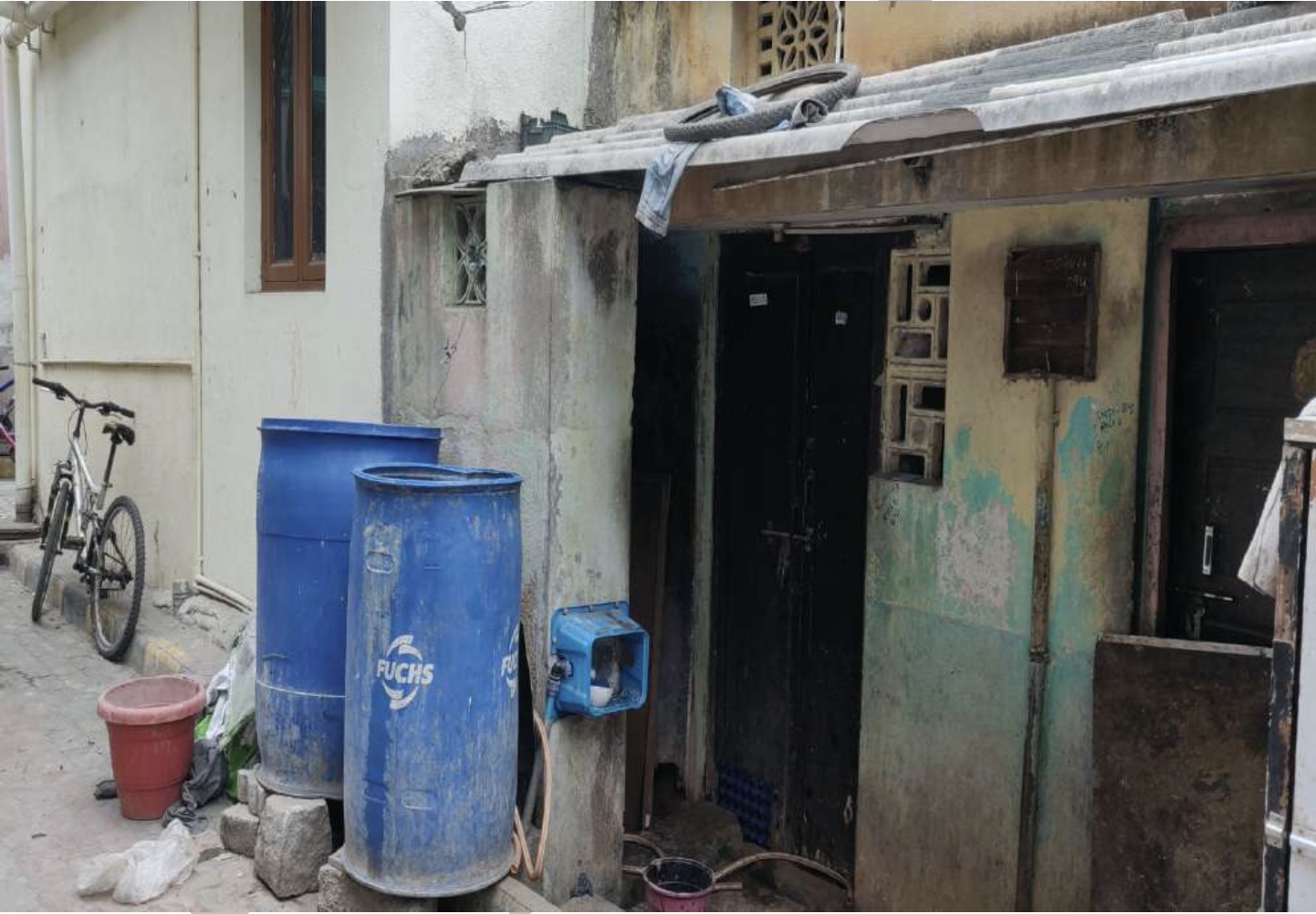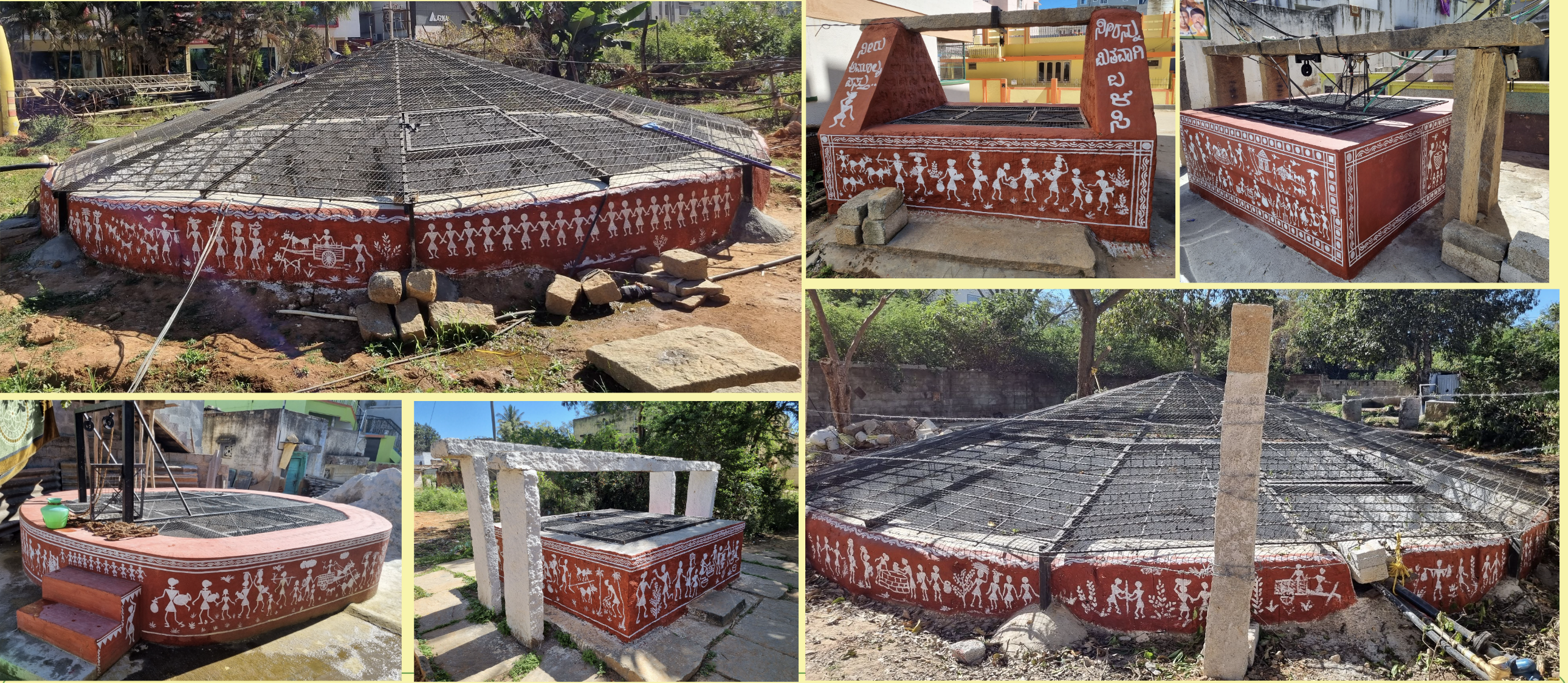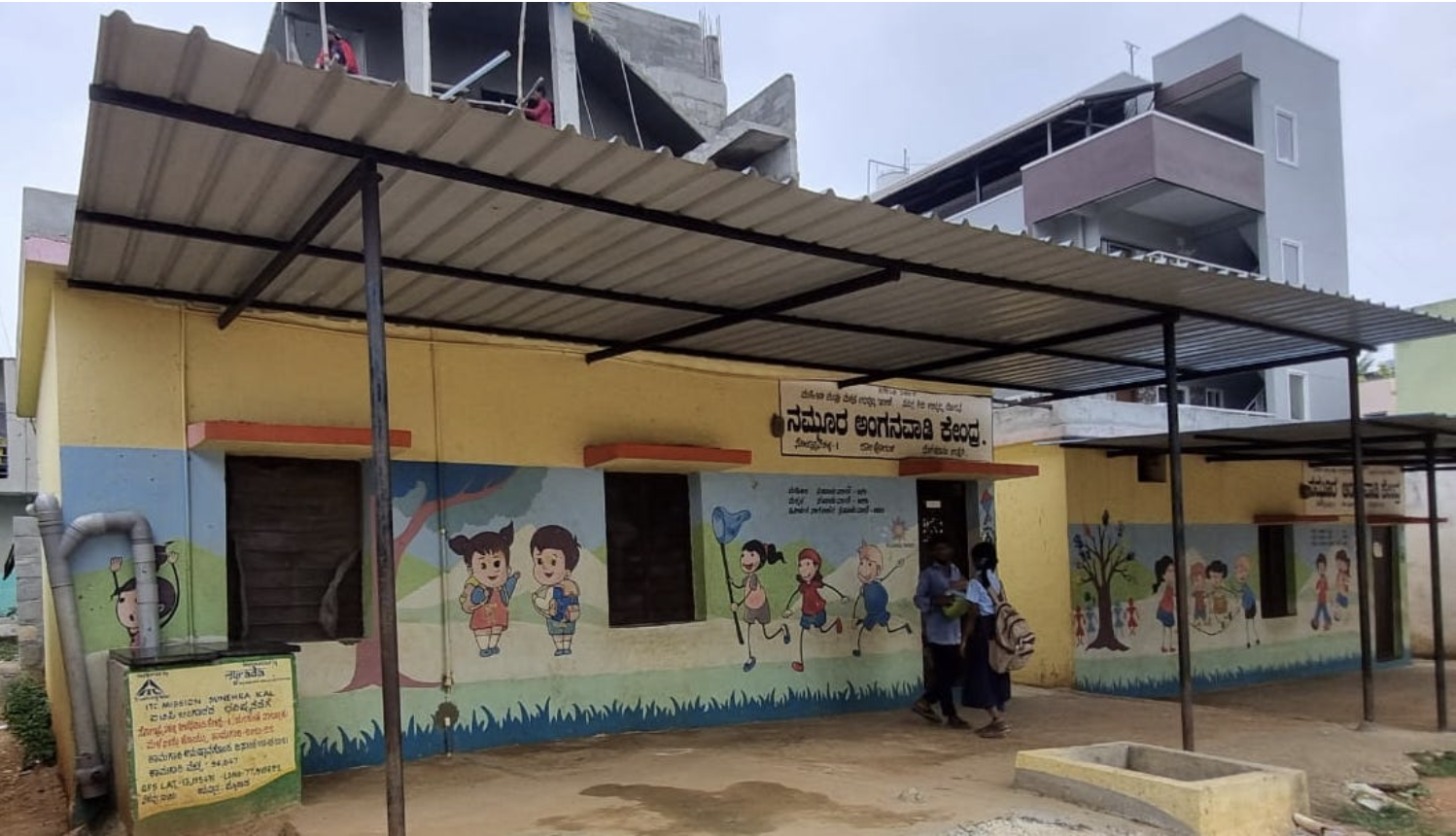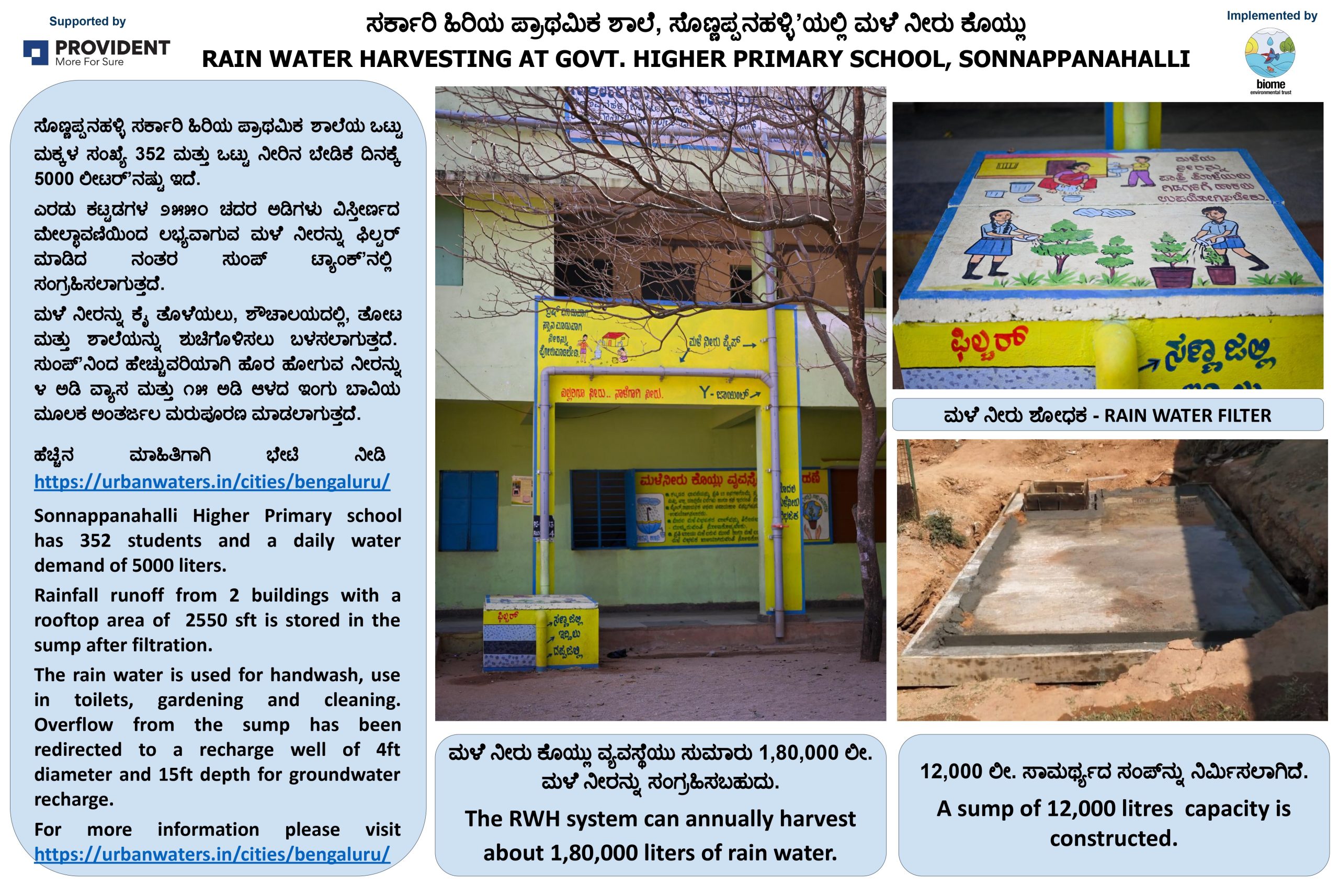This home harvests rainwater, has used no municipal water in 10 years!
Lying at the corner of a quiet residential lane in Vidyaranyapura, R Balasubramaniam’s house is anything but plain. Greenery surrounds the two-storeyed orange-painted house, unlike the more sober buildings nearby. Creepers climb up the house all the way to the terrace, and also lay intertwined across the fence. Balasubramaniam’s home is ‘green’ in other ways too. An elaborate RWH system is set up here – water from multiple rooftops are collected and sent into an open well in the compound, recharging groundwater.
Octogenarian Balasubramaniam first came across the idea of RWH around ten years ago, through newspapers. A retired electrical engineer, he was intrigued and took it upon himself to learn more and then found a plumber who setup the system. In addition to a sloped roof, the house has three flat rooftops. Balasubramaniam connected all four surfaces to the open well using downpipes and gutters. He even connected a balcony and a portico to the system. In short, here rainwater is collected from every surface on which it falls.
The water from all surfaces converge into a downpipe, and is then passed through a filter, and sent into the well. The well had been dug in 1995 that yielded water up untill 2002. Balasubramaniam says, “All wells in this area used to have water since Vidyaranyapura lake is nearby. But as the lake went dry, wells dried up too.” While most residents closed up their wells, Balasubramaniam did not. “I was just too lazy,” he says. He was lucky, because while setting up the RWH system later, he only needed to channel the water into the existing well instead of digging a new one.
Balasubramaniam is proud that he is not just harvesting rainwater for his household, but also recharging groundwater in the process. “Since the bottom of the well is unlined, water seeps down, causing the water table to rise. So the community also benefits,” he says. The 45-feet deep well currently has 25 feet of water. Balasubramaniam has a simple system to measure the water level – a rope, with knots indicating depth, which has been lowered into the well.
Since the system was installed 10 years ago, his eight-member household has not used BWSSB water. Everyday, 2000 litres is drawn from the well and used for all purposes. Only the water for drinking and cooking is purified using an RO filter. Rarely, BWSSB’s minimum monthly supply of 8 KL is used for gardening. “I use it only because it is available, we do not need it,” says Balasubramaniam.
To maintain the system, rooftops are cleaned routinely, and the vent collecting water from the sloped roof is cleaned once in three months. Balasubramaniam himself cleans the filter once every two years. He removes the filter media of charcoal and jelly, cleans it using a jet pipe, and puts it back.
| Catchment Area | Multiple rooftop surfaces, coming to 2500 sq ft |
| Components |
|
| Description of the implementation | Water from rooftop surfaces is channeled using gutters and downpipes into the filter. Filtered water is carried by pipes into the open well. Well water is pumped up into an overhead tank of 1000 litre capacity, and used. |
| Annual RWH potential | About 203 KL (232.2X0.9X0.97) |
| Cost of implementation | Rs 5,000, as of 2007 |
| Time taken | Two days |
| Issues at present | None |


